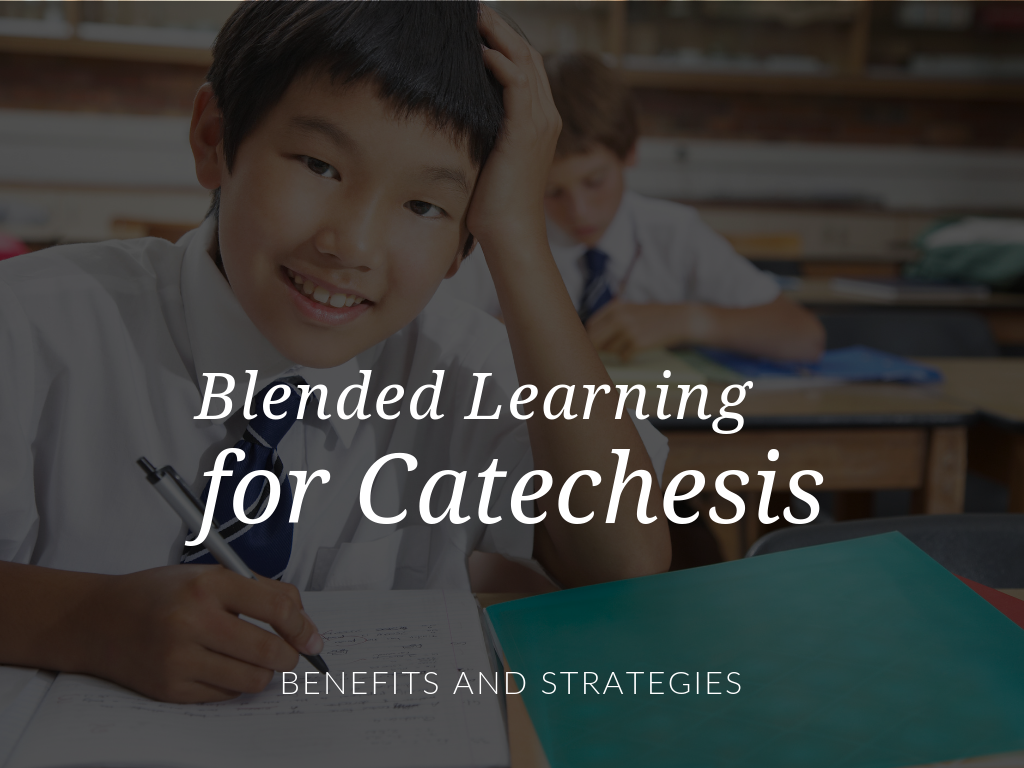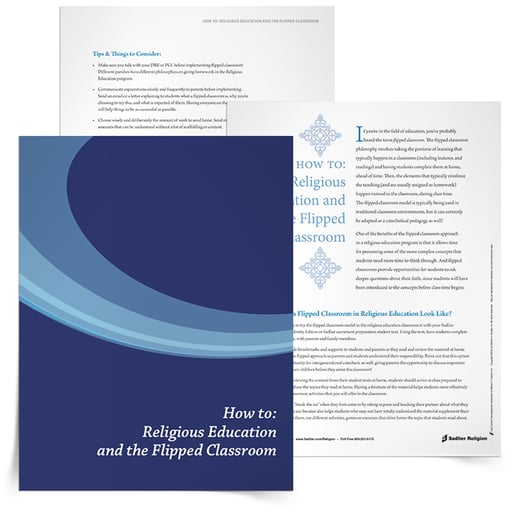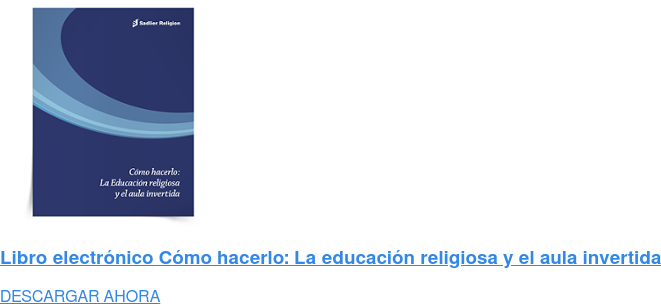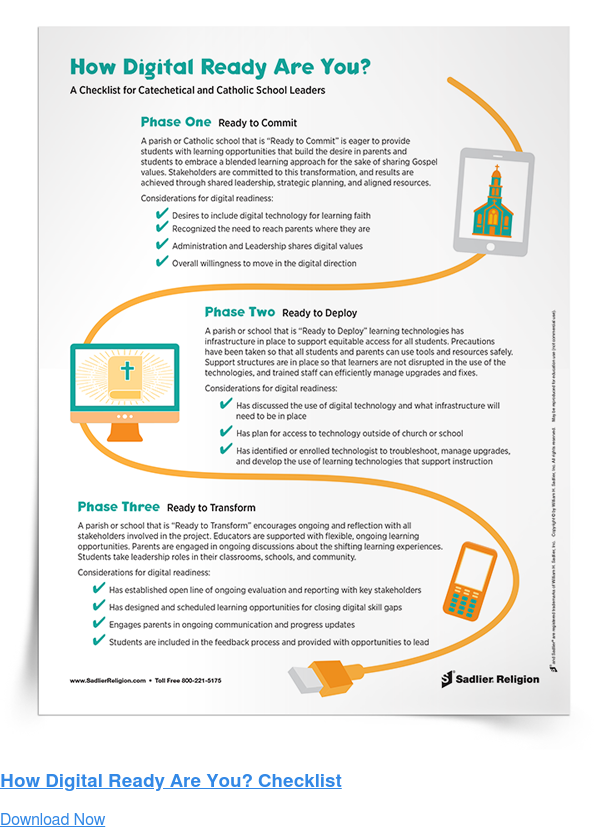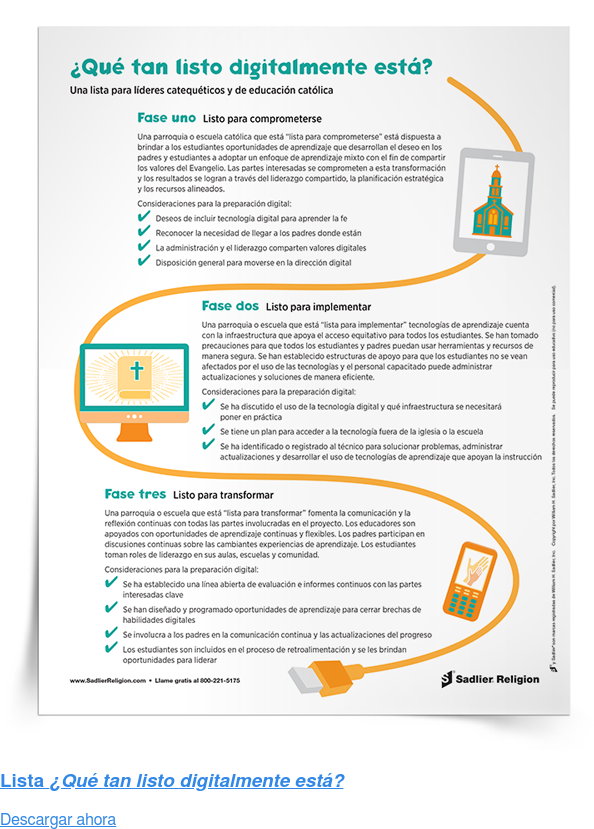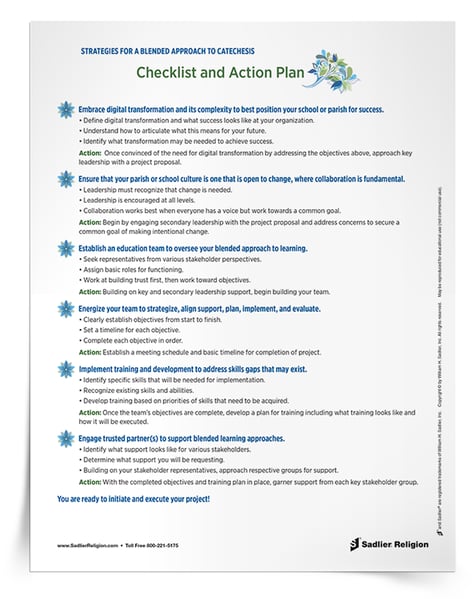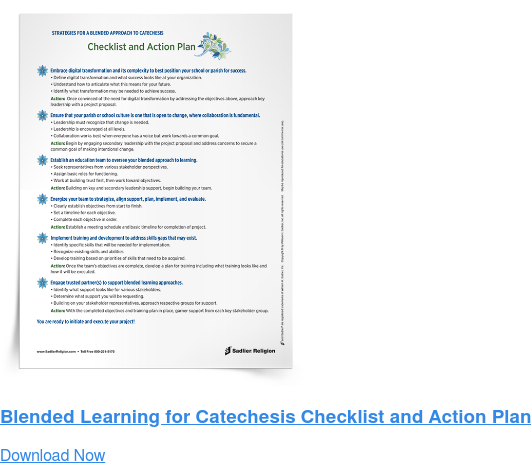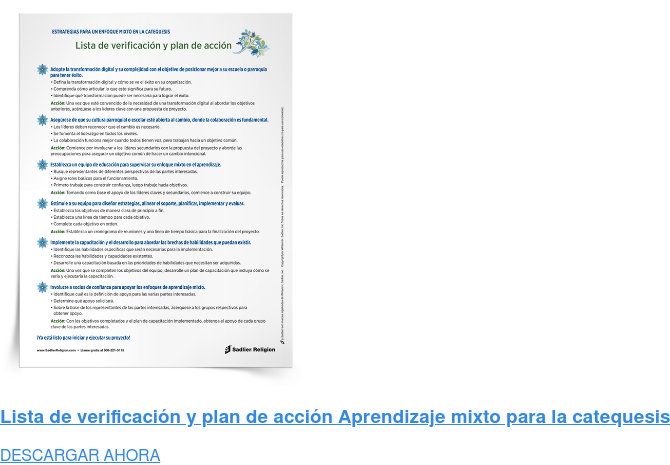January 29, 2020 REL Topic- Blended Learning, REL PD - Leaders
A blended approach can support and enhance catechetical efforts in school, parish and home settings. Are you ready to implement a blended learning model for religious education? In this article, guest author Steve Botsford, MBA, MRE outlines how using a blend of traditional instruction and educational technology can enhance promoting the Gospel and Gospel values. Plus, download a free Blended Learning for Catechesis Checklist and Action Plan in English or Spanish.
What is blended learning?
Blended learning is a term used to describe the combined use of both traditional face-to-face and online learning experiences. Blended learning has become a model that is succeeding and enhancing teaching and learning experiences in academic settings. Blended learning offers enhancement and personalization, as well as an “anytime, anywhere” approach to learning by putting modern educational technology to use in combination with traditional teacher-led instruction. The “blend” in blended learning happens in varying degrees and in multiple models; there is no one way or right way to do blended learning. The same benefits and flexibility of a blended approach in traditional academic settings apply to catechetical efforts as well.
What are the benefits of blending learning for catechesis?
A blended approach to catechesis can not only support but also enhance our catechetical efforts.
Transformative
First, blended learning can be transformative in that it transforms catechetical programs for both leaders and learners. Digital technology can transform your catechetical program and can lead to transformation among your catechetical staff, parents, and children. When blended learning is done well, it will allow catechists and learners to do something they’ve never done before, like:
-
Deliver catechesis anytime, anywhere by offering adaptability and mobility whenever and wherever families choose to access it
-
Communicate instantly with families through robust and modern messaging tools
-
Involve families, who pay a critical role in the success of their children’s education, directly in faith formation by linking religious education to the home digitally
-
Utilize effective learning technologies more commonly found in school classrooms that are familiar to and appealing to students as opposed to traditional catechetical classroom methods, which can feel outdated
-
Engage and inspire today’s digital kids with captivating multimedia to illustrate faith concepts
-
Reach parents in meaningful ways so you don’t have to rely on family features finding their way from the child’s textbook to the refrigerator
-
Use technology as a primary resource, and not an ancillary resource, for catechesis
Mutually Supportive
Second, a blended approach must be mutually supportive as we accompany one another in faith. Traditional sessions are typically limited to a certain time and space. A blended learning approach will allow engagement and interaction in and outside of a classroom. We can then be continually involved in one another’s lives acting as what Pope Francis calls a field hospital, proclaiming mercy and walking with people in compassion and love.
Directors and catechists perhaps play the most important role in using a blended approach to catechesis. They see first-hand the challenges of family involvement and student engagement and will ultimately become the “blender,” the ones who balances print and digital learning for success with children and families and who maintain the face-to-face relationships that make this encounter authentic and effective.
Mission-Oriented
Third, a blended approach can be socially directed to help parents and children live out their lives as missionary disciples in the modern world. Parish and family communication and connection is enhanced by the intentional use of common technologies, providing an opportunity for children and their families to grow in faith and experience an active relationship with Christ and the Church as they live out their roles as missionary disciples!
Examples of Blended Learning or Blending Learning Approach
Flipped Catechesis
Catechists can assign core reading and assignments to students to complete at home with a blend of print and digital resources. Traditional face-to-face instruction is then dedicated to reflection, discussion, and application.
For more on a flipped model for catechesis, the How To: Religious Education and the Flipped Classroom eBook explains and provides help implementing a flipped classroom approach to religious education.
At-Home Catechesis
Students and families can complete assignments and assignments from catechists online in their own time. They can then attend regular face-to-face catechetical sessions in the school or parish.
Digital Extensions
Prepare students for or follow up on lessons by beginning or ending lessons with digital extensions and coursework. Lesson primers, discussion starters, or other digital features that extend learning beyond the classroom can enhance your catechetical sessions.
For more ideas about ways to effectively use technology to boost student engagement in catechesis, no matter a catechist’s or teacher’s level of digital ability, check out the 3,2,1 Liftoff! Interactive Ideas for Supercharged Catechesis Webinar, hosted by the author of this blog.
Download a free resource for a checklist on how to determine your digital readiness!
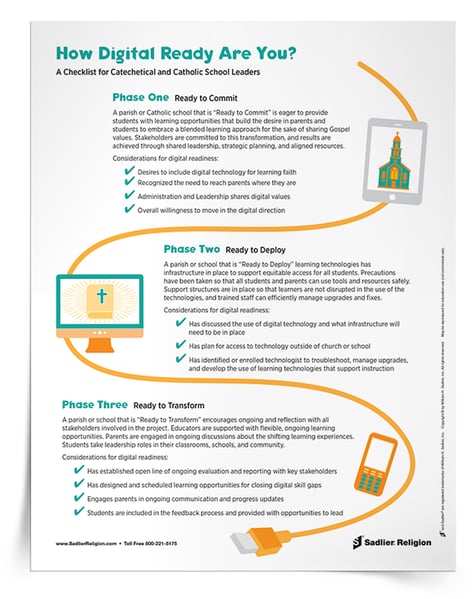
Strategies to Support Blended Learning for Catechesis
-
Collaboration is fundamental! Ensure that your parish or school culture is one that is open to change.
-
Establish an to oversee your blended approach to catechesis.
-
Energize your team to strategize, align support, plan, implement, and evaluate.
-
Implement training and development to address skills gaps that may exist in staff.
-
Embrace digital transformation and its complexity to best position your school or parish for success.
-
Engage trusted partner(s) to support blended learning approaches.
In Summary
Catechesis is a process of leading others to explore the mystery of Christ. We catechize with the intent that “Christ may dwell in your hearts through faith; that you, rooted and grounded in love . . . . know the love of Christ that surpasses knowledge, so that you may be filled with all the fullness of God” (Ephesians 3:18–19). Blended learning for catechesis is simply using that blend of traditional instruction and educational technology to enhance promoting the Gospel and Gospel values.



